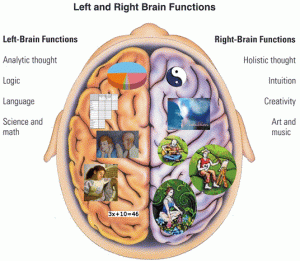Corporate social responsibility is a notoriously polarizing subject. Milton Friedman’s well-known response to the subject is “a corporation’s responsibility is to make as much money for the stockholders as possible.” Echoing a similar mindset, Patrick Luciani, in an article for the Financial Post, writes “people-before-profits is just code for increasing the costs of goods for all of us.” On the other end of the spectrum, Freeman says that a corporation has a duty to all its stakeholders.

I’ve always found myself leaning towards the Freeman end of the spectrum. I thought that if a corporation could do good for society while maintaining its profits, it would be a win-win situation. I recently realized that CSR isn’t as straight forward as I thought.

As I read the words “I believe what BC Ferries is doing is wrong and they are horrendous to treat their customers with such a lack of care” in Gemma Broadely’s third blog post, I couldn’t help but think about the timeless aphorism: “the road to hell is paved with good intentions.” Gemma talked about BC Ferries’ new regulations that will ban smoking on ferries and force all passengers out of cars and to the upper decks.” When I read about the new regulations, my immediate reaction was that BC Ferries was trying to do good for the community by limiting second hand smoke and allowing passengers to stretch their legs on the upper decks. I was surprised to see that not everyone perceived the new regulations the same way I did. This realization made me think about how easy it is for companies’ good attentions to turn awry.
Francis Frei and Anne Morriss, writing for Fortune.com, say that there are three main ways a company’s good attentions can go awry:
- Trying to be good at everything
“Great service providers tend to over-deliver on the things their customers value most, and under-deliver on the things they value least.” - Getting your employees to work harder
“When things go wrong, lack of effort is an easy target. Many think service should improve with a little more commitment, usually from your direct reports. But this argument obscures the fact that you may be systematically setting your employees up to fail. - Giving service away
“Generosity is at the core of great relationships, and customer relationships are no exception. Create tremendous value for the people who pay you, and then capture some of that value for yourself. Those are the generous economics behind successful service companies.” Some companies make the mistake of giving too much away.
What then is the best approach to CSR? Anticipating how your good intentions are going to be perceived and altering your approach accordingly.
Word count: 446
Works referenced:
https://blogs.ubc.ca/gemmabroadley/
https://bfi.uchicago.edu/news/feature-story/corporate-social-responsibilty-friedmans-view
http://business.financialpost.com/opinion/corporate-social-responsibility-has-gone-off-the-rails
http://fortune.com/2012/03/28/the-good-intentions-that-will-kill-your-business/
Images:
http://www.renewableenergyworld.com/ugc/articles/2017/05/23/corporate-social-responsibility–how-renewables-have-expanded-the-field.html
http://www.vancitybuzz.com/2016/03/polish-shipyard-bc-ferries-upgrades/


